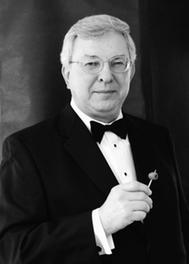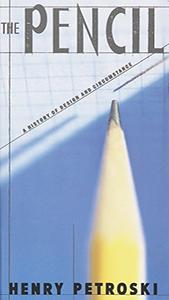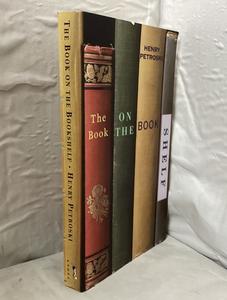
|
|
| Henry Petroski | |
Henry Petroski died earlier this month. The American Society of Civil engineers described him as "a brilliant civil engineer, wordsmith, and educator with a great appreciation for history who achieved fame for his many engaging, enjoyable books on engineering and facets of it." All true.
Many of his books found a general readership, including To Engineer Is Human: The Role of Failure in Successful Design; The Pencil: A History of Design and Circumstance; The Evolution of Useful Things: How Everyday Artifacts-From Forks and Pins to Paper Clips and Zippers-Came to Be as They Are; and The Toothpick: Technology and Culture.
Most authors outlive their books (aka OP), but the lucky writers have titles that outlive them. When that happens, a phenomenon known as retail mourning occurs and a sales floor wake is traditionally held. Bookstore buyers react to a well-known author's death by immediately ordering multiple backlist copies and floor booksellers create display memorials, including appropriate signage, with whatever stock they have on hand.
Henry Petroski's passing did not seem to spark a wave of retail mourning displays in bookstores, at least as far as my generally reliable--if scientifically flawed--social media research could find. I wasn't shocked, but felt a little sad about that.
 From my bookselling days, I remember two of his works in particular: The Book on the Bookshelf and The Pencil, the latter of which lingers in my reader's memory for two reasons. The first is Petroski's deep appreciation for Henry David Thoreau's engineering skills, particularly as an innovative pencil maker in his family's business, Thoreau & Co. Pencils ("...there is little doubt that before Henry David Thoreau was the literary celebrity he has come to be, the pencils he and his father made came to be without peer in this country").
From my bookselling days, I remember two of his works in particular: The Book on the Bookshelf and The Pencil, the latter of which lingers in my reader's memory for two reasons. The first is Petroski's deep appreciation for Henry David Thoreau's engineering skills, particularly as an innovative pencil maker in his family's business, Thoreau & Co. Pencils ("...there is little doubt that before Henry David Thoreau was the literary celebrity he has come to be, the pencils he and his father made came to be without peer in this country").
The second concerns the unusual dimensions of the book itself, which was a bookseller's shelving challenge. "My book on the pencil was published in a format suggestive of its subject, a format that was taller and narrower than the usual octavo," Petroski writes in The Book on the Bookshelf. "This worked fine to distinguish the book and draw attention to it when it first appeared in hardback, but the unusual size proved to be a problem when the book was to come out in paperback, a format in which there is much more uniformity of size to conform to display racks. In the end, the intended paperback publisher did not want to handle the book, because it would have had to be typeset all over again to bring its pages into conformity with those of a standard-size book, and so the publisher of the hardback brought out the paperback in the original, unusual format."
 |
|
| (High Barn Books, U.K.) | |
Although it has received much less attention than Petroski's other works, The Book on the Bookshelf is, naturally, my favorite, especially the chapter on books and bookshops, which includes highlights like these:
"During the sixteenth century, stationer-booksellers typically maintained workshops in which binding was carried out," Petroski writes. "In the next century these merchants continued to act as middlemen, but the actual binding came to be done by master binders. Those books that were bound directly by the stationer or by the binders he employed became known as trade bindings, and were more or less common, as are the bindings in which most books are issued today. There were alternatives, of course, and 'rich, private collectors continued to have their books bound in a more sumptuous manner, using as a rule damask and velvet rather than leather.' Such was far from the standard stock in bookshops, however."
While Samuel Pepys wandered the streets of London during the 17th century, booksellers "were often also publishers who carried their own titles, and even when they were not, each of them tended to have a unique stock," Petroski observes. "Thus Pepys frequented a number of shops around London, and he took what purchases he made to a separate binder for making into what we would consider a finished book.... The booksellers of the later seventeenth century were not likely to carry bound books at all, for it was then the custom to buy one's books in loose quires, or gatherings of printed sheets."
Nineteenth-century booksellers were caught up in the "general fascination of... inventors to mechanize and power just about everything that moved." A style of binding uniform for all copies of the same book appeared around 1830, when machinery was introduced to letter the clothbound cases that could be fitted over printed pages.
"This development ushered in a new chapter in the way books were made and sold," he writes. "Whereas the bookseller would bind or have bound, by hand of course, only as many copies as were likely to be sold in the immediate future--a form of just-in-time manufacturing--with the advent of machinery the publisher itself began to bind an entire edition of a book in the common style of the time. Bookshops no longer needed to stock loose sheets, and so their shelving requirements changed to resemble more those of a library, where books had for some time been shelved vertically, with their lettered spines out."
Read in Peace, Henry Petroski, "explicator and champion of the pencil."

